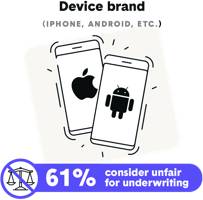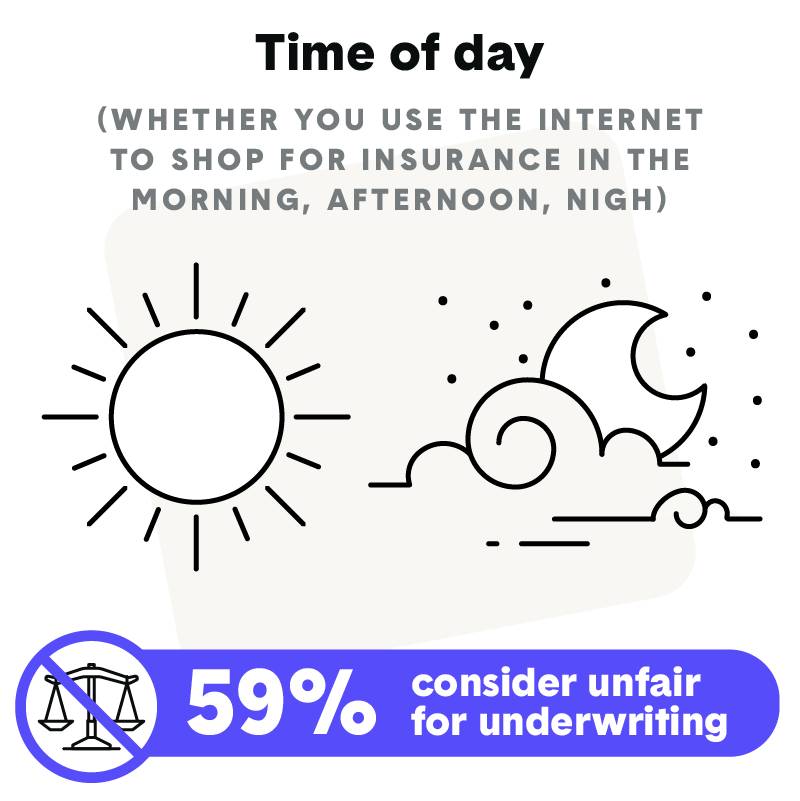Everything from your email address to your online shopping habits are being tracked by countless companies. But does that help or harm consumers? The Zebra explores how your online behaviors and preferences potentially impact your car insurance rates — and where consumers stand on the practice.
Could your online behavior affect what you pay for car insurance?

Table of contents:
About
All day long we navigate the vast world of the internet in order to work, communicate with family and friends, pay bills, buy stuff, and entertain ourselves, and all along the way we leave a trail of clicks, taps, and swipes that collectively say something about us. Or at least that’s how companies worldwide are explaining why they track and use these digital trails to learn about consumer behavior.

Track everything from your video streaming to the size of clothing you purchase to predict your future medical expenses

Monitor loan applicants’ social media profiles to search for indicators that people will pay the loan back on time

Use customer data such email characters, capitalization, and typing errors, to set interest rates for personal loans
This report explores whether the U.S. auto insurance industry — which serves 250 million U.S. drivers — is collecting and using data about consumers’ online behaviors and preferences (their “digital footprints”), and what impact the use of that data could have on them.
How are insurance companies monitoring consumers’ digital footprint behavior today — and what might that cost consumers in real dollars?
How do consumers feel about being tracked online, and what data do they consider discriminatory to use in pricing insurance rates?
How could Big Data revolutionize the very underwriting groundwork of auto insurance — and who would the winners and losers be?
Definitions
Digital Footprint: Your online activities, or data generated based on where, when, and how you interact with a website or internet-connected device
Rating Factor: A single category of information an insurer uses to assess a consumer’s risk and determine pricing (ie. age, type of vehicle, or driving record)
Underwriting: The process of insurance companies evaluating a set of rating factors in order to determine risk and appropriate pricing
Predictive modeling/analytics: The use of big data in identifying trends to forecast future events
Key Findings
1. Car Insurance Rate Projections:
Your online behavior could save you $341 on car insurance — or it might cost you $197
2. Status of the Industry:
Auto insurers have the will and the way to track consumers’ digital footprints — in fact, they’re already doing it
3. Survey of 1,013 Consumers:
Which digital footprint data points are unfair to use in auto insurance?
Key Findings 1
Car Insurance Rate Projections: Your Online Behavior Could Cost You $197 on Car Insurance — Or It Might Save You $341
Any company with a website can track a number of actions you take or products or services you use and map them to valuable insights. So how might this look if insurers were to use the various digital footprint factors below in their insurance pricing?
Can you put a price on digital footprints? We did.
These figures are theoretical rate changes based on risk assessment — not actual premium changes. But they do illustrate just how risky each behavior would be and how much digital footprint monitoring could impact consumers if insurers opted to use such data — now or in the future.

*These are a sample of the 35 digital footprint factors we examined, some of which increased rates 14% and others which lowered them 24%.
Key Finding 2
Status of the Industry: Insurers Have the Will and the Way to Track Your Digital Footprint (In Fact, They’re Already Doing It)
Do U.S. auto insurance companies track your digital footprint? What we know:
1. They have the need.
– Insurance companies want as much data as they can get their hands on to better evaluate risk, determine your rates, and remain competitive.
– Many financial services companies are already using your online data to tell if you’re a good customer (without you even realizing it), substantiating the use of data to indicate risk.
2. They have the ability.
– Insurance companies have the technical ability to track your online activity today — whether by interacting with consumers online, tracking behavior through telematics or usage-based insurance devices, or simply purchasing data about consumers.
– Property and casualty insurers admit they are investing in new digital monitoring technologies such as predictive modeling, social media tracking, and text mining.
3. They are already doing it.
– Insurers are already tracking your online activity for purposes other than setting rates, such as fraud detection, claims processing, and marketing.
– Insurers in most states engage in price optimization, in which an insurer uses online behavior monitoring and predictive modeling to gauge whether a customer will accept a price increase or not. (Many consumers and regulators say price optimization is unfair because it could charge consumers with the same risk level different rates for the same coverage. Price optimization is now restricted or prohibited in 20 states.)
Key Finding 3
Survey: Which Digital Footprint Data Points are Fair to Use in Auto Insurance?
While digital footprint data points referenced in this study are not approved (or not yet approved) rating factors, how would people feel if they were?
We asked 1,013 consumers who have car insurance to consider whether 30 data points — real and fake — would be fair to be used by insurance companies both for pricing their policies (underwriting) and for any business use.
More than half of consumers said they would consider the use of every digital footprint behavior in pricing auto insurance as “unfair.”









More people think it’s fair to use race in car insurance pricing than any digital footprint factor.
Interestingly, we also asked how consumers feel about the many real factors that affect their auto insurance, and they said many are also unappealing.

In other words, the insurance industry is already using plenty of real rating factors which people consider unfair. (Some states have even outlawed the use of some of these factors.)
However, there are some cases in which some people would allow digital footprint factors — it’s all about the money.
Still, a substantial portion of consumer sentiment appears to be forming about the use of digital footprints in auto insurance.
Pros & Cons
Digital Footprint Monitoring in Auto Insurance: Who are the Winners & Losers?
Like almost every other industry, insurance is being reshaped by and around technology, and the stakes are significant for insurance carriers, regulators, and of course, consumers. Digital footprint monitoring opens up a new frontier of possibilities and perils.
PROS
1) Accuracy and stability in underwriting
2) Industry innovation and reduced consumer costs
3) Support the 11%+ of people who have no credit history
CONS
1) Possibly unfairly discriminatory and irrelevant
2) Technology is new and not proven
3) Consumer privacy could be jeopardized
It’ll be up to state regulators to determine if digital footprint factors are fair for insurers to use, and they’re scrambling to prepare. The American Academy of Actuaries warned in its June 2018 report on Big Data, “The complexity and evolution of the methods and approaches used by insurers is threatening to outpace the rate at which regulators can educate themselves on these new methods and approaches.”
Conclusion
Is It Likely That Car Insurance Companies Will Use Digital Footprint Data in Underwriting?
– Auto insurance rating factors have changed over time, adding credit scores and usage-based insurance in recent years, so it’s certainly possibly they could change again.
– Insurers are clearly investing in technology, and incumbents with deep pockets are working to keep an edge on an industry with tech-born newcomers.
– Insurers have the ability to use digital footprint data in underwriting, and there are many indicators they have the intention as well.
The precedent has been set in other industries and other countries, so U.S. auto insurers may simply be trying to figure out how to leverage big data both fairly and efficiently.

Download the full report
Stay in touch and subscribe!
Get advice, insights and tips from our newsletter.
